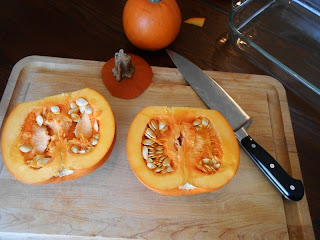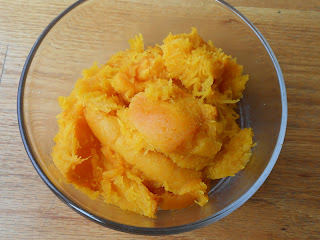These cute little pies and tarts are easy to make and they are also a great use for leftover cranberry sauce (the chunky kind, not the jellied cranberry sauce). Below is my own super-easy recipe that works as both a sauce and a filling. If you want to use your own leftover cranberry sauce, you can just add some thickener. How much thickener to add? Depending on how much liquid your sauce has, a good place to start would be 1 teaspoon cornstarch for two cups of cranberry sauce. If you like your pies sweeter than you like your cranberry sauce, you can always add a little extra sugar too.
Cranberry Sauce / Pie Filling:
1 12-ounce bag raw cranberries, picked over to remove stems and bad berries
1 Tablespoon grated orange zest
2/3 Cup firmly packed brown sugar
1/2 Cup Pure Maple Syrup
pinch of ground clove (about 1/8 tsp)
optional: 1/4 teaspoon each freshly ground nutmeg and ground cinnamon
Simmer over low heat until the mixture makes a thick sauce and berries are mostly broken. Cool to room temperature. At this point you can use it as a delicious cranberry sauce. If you want to thicken it for pie filling, add 1 teaspoon cornstarch and stir well. The filling will thicken while baking. Use with your favorite sweet butter crust, or try this great recipe from Martha Stewart: Pate Sucree Extra. (You can use however much you need based on how much cranberry sauce you have and freeze the leftover dough).
Roll out the crust and fill mini-pie pans, tart shells, or muffin cups with the dough. Spoon in the cranberry sauce mixture and cover with a top crust or a streusel topping. (I like to sprinkle sugar on top if I am using a top crust.)
Bake at 400 degrees for about 20 minutes for mini-pies and tarts, or 40 minutes for a full-sized pie. The crust should be turning golden and the filling should be bubbling up a little bit.
Enjoy!













.jpg)









.JPG)





.JPG)


.JPG)
